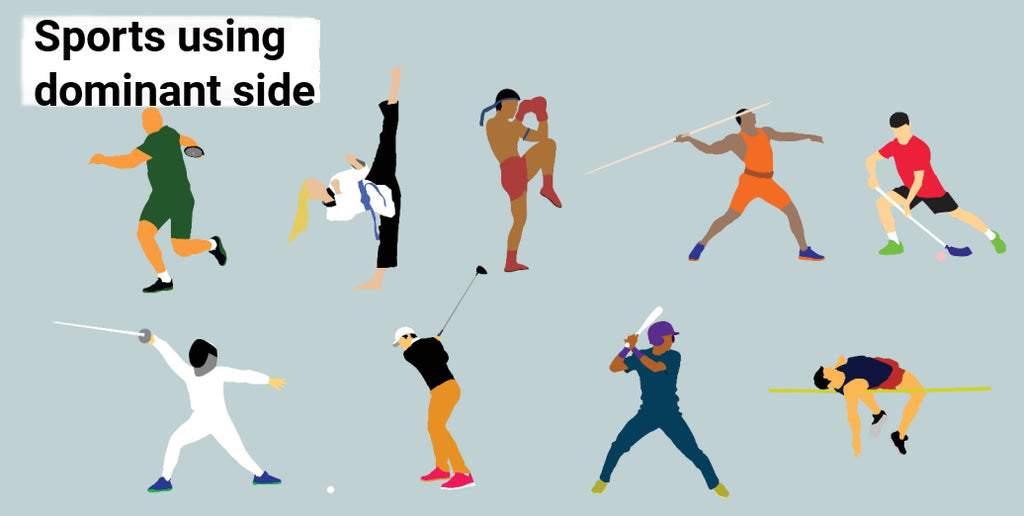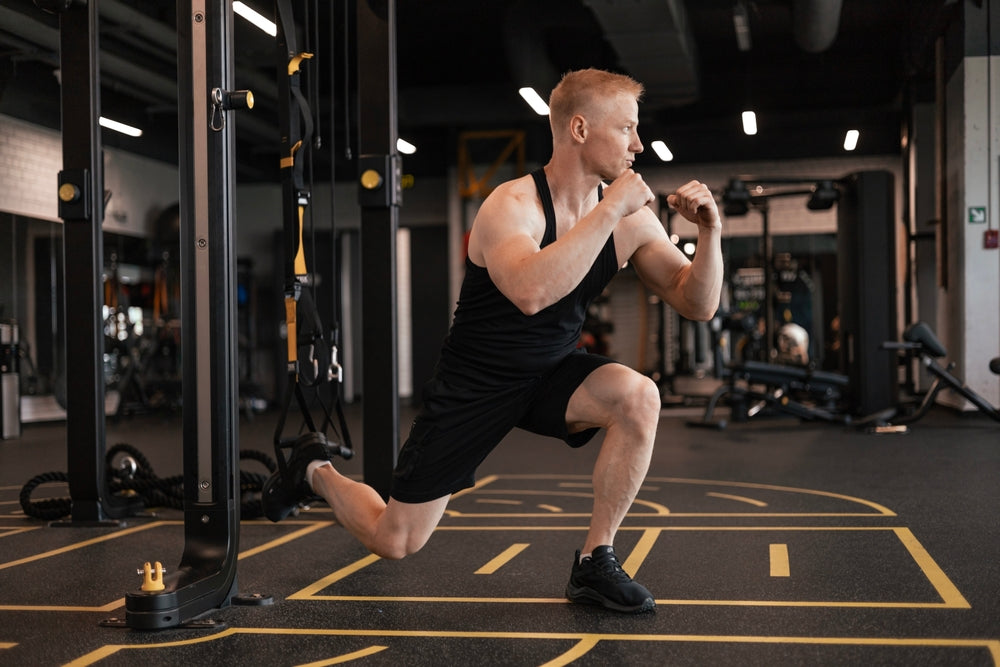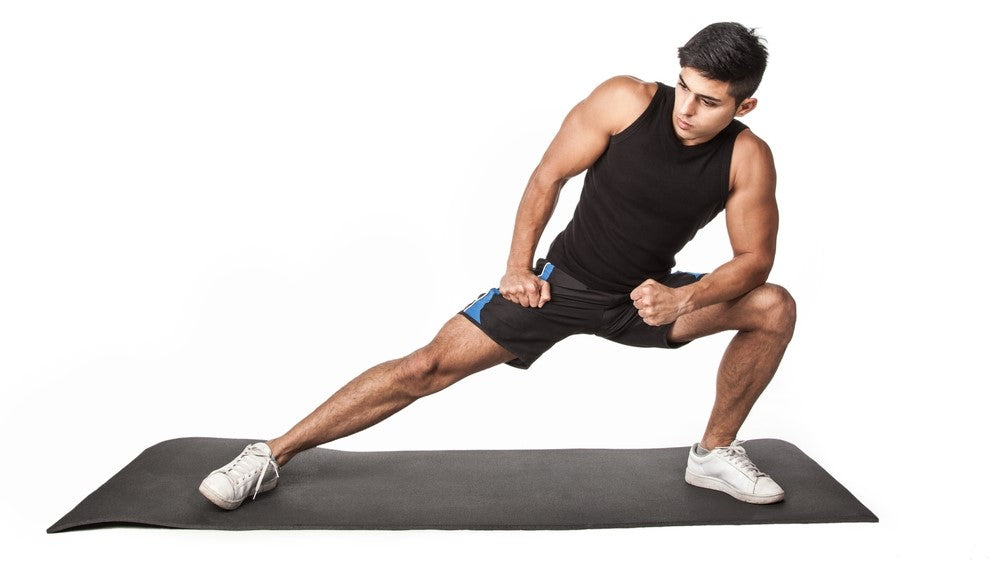Muscle imbalances refer to differences in strength, flexibility, or muscle activation between opposing muscle groups or sides of the body. Muscle imbalances and asymmetries are a common issue among sports and fitness enthusiasts, strength builders, bodybuilders, and others. They can lead to discomfort, pain, and even injury if left unaddressed.
These imbalances often occur due to factors such as poor posture, repetitive movements, and muscle weakness or tightness. However, with the right approach, it is possible to correct these imbalances and restore proper muscle balance and function.
In this article, we will explore the causes of muscle imbalances, how to spot muscle imbalances, their potential consequences, and effective strategies for correcting them. From targeted exercises and stretching to mobility, we will provide practical tips to help you address muscle imbalances and promote overall musculoskeletal health.
Causes of Muscle Imbalance and Asymmetries

Muscle imbalances can be caused by various factors, including:
1. Repetitive Movements
Engaging in repetitive movements or activities in work or play that primarily use certain muscles while neglecting others can lead to imbalances.
2. Overuse
A lack of variety in a workout routine can lead to too much repetition of specific movements and overused muscles, which could cause injuries and muscle imbalances.
3. Sports
If you play golf, tennis, softball, baseball, and other sports that tax the muscles on one side of your body, it can cause muscle imbalances. Similarly, boxers who focus most of their workouts on the upper-body train in a rounded-shoulder, head forward stance, often causing Upper Crossed Syndrome (UPS) that affects the balance between the neck flexors and the lower traps, and the chest muscles and upper traps.
4. Poor Posture
Prolonged periods of poor posture can cause certain muscles to become tight and others to become weak, resulting in imbalances.
5. Muscle Weakness or Tightness
Pre-existing muscle weakness or tightness, typically due to the lack of exercise, can contribute to imbalances.
6. Injury
An injury that impacts one muscle or muscle group can lead to compensatory patterns, where other muscles try to compensate, leading to imbalances. An example is putting more stress on the right ankle because of an injured left ankle.
7. Sedentary Lifestyle
A lack of regular physical activity can contribute to muscle imbalances, as certain muscles may become weak due to underuse. Sitting hunched over a keyboard at a desk for many hours each day over-engage the shoulder and lower back muscles, and hip flexors, while under-engaging other muscle groups.
8. Improper Training Techniques
Incorrect form or technique during exercise can lead to imbalances by placing excessive stress on certain muscles while underutilizing others. Working only on the arms, shoulders, and chest muscles, aka “mirror muscles,” and neglecting the back and legs is an example of improper training techniques.
9. Unbalanced Training Routines
Not balancing the workload of muscles that work the joints, such as the triceps and biceps or quads and hamstrings. This is often caused by doing more pushing than pulling exercises.
10. Biomechanical Factors
Individual differences in body structure and mechanics can predispose certain individuals to muscle imbalances.
11. Handedness
Using the dominant hand more often causes minor strength differences. Studies have indicated that right-handed people have significantly more grip strength in their dominant hand, while the difference in grip strength in lefties was minimal. Researchers determined that left-handed people, living in a mostly right-handed world,
have adapted to using both hands.
Addressing muscle imbalances typically involves a combination of stretching, strengthening, and corrective exercises to restore balance and prevent further issues.
What are the Signs of Muscle Imbalances?
Signs of muscle imbalances can vary depending on the specific imbalance and its severity. Sometimes it can be subtle at first, but the sooner it is addressed, the easier it will be to rectify the imbalance.
Typically, signs like these occur during workouts or sports activities:
— Pain or Discomfort: Chronic pain or discomfort, especially in specific muscles or joints, can indicate muscle imbalances.
— Limited Range of Motion: Difficulty moving a joint through its full range of motion may be a sign of muscle tightness or weakness.
— Poor Posture: Imbalances in muscles that support posture can lead to slouching, uneven shoulders, or other postural issues.
— Muscle Weakness: Noticeable weakness in certain muscles, especially compared to the muscle strength in their counterparts, can indicate an imbalance.
— Muscle Tightness: Persistent tightness or stiffness in certain muscles, even after stretching, can be a sign of imbalance.
— Fatigue: Muscles that are overworked due to imbalances may fatigue more quickly than balanced muscles.
— Joint Instability: Imbalances can lead to joint instability, increasing the risk of injury during physical activity.
— Asymmetry: Visible differences in muscle size or tone between the left and right sides of the body may indicate imbalances.
It’s important to consult a healthcare or fitness professional for an accurate assessment if you suspect you have muscle imbalances, as they can provide guidance on how to test for muscle imbalances, and implement the most appropriate corrective measures.

Examples of Muscle Imbalances and Asymmetries
Common examples of muscle imbalances and asymmetries include:
-
Quadriceps and Hamstrings:
Quadriceps dominance
occurs when the quadriceps (front thigh muscles) are stronger when compared to weaker hamstrings (back thigh muscles), which can lead to knee issues due to imbalances in the knee joint.
-
Biceps and Triceps: Imbalances between the biceps (the front of the upper arm) and triceps (the back of the upper arm) can occur due to overtraining or favoring one muscle group over the other. This can lead to issues like elbow pain or limited range of motion.
-
Chest and Back: Weakness or imbalance between the chest muscles (pectorals) and the muscles of the upper back (such as the rhomboids and traps) can contribute to poor posture and shoulder issues.
-
Upper Crossed Syndrome: Weakness in the deep neck flexors and lower traps, combined with tightness in the upper traps and chest muscles, leading to forward head posture and rounded shoulders.
-
Lower Crossed Syndrome: Weakness in the abdominal and gluteal muscles, combined with tightness in the hip flexors and lower back muscles, leading to an anterior pelvic tilt.
-
Hip Flexors and Glutes:
Tight hip flexors often occur in individuals who sit for long periods, leading to weak glutes and hamstrings and an increased risk of lower back pain and weak posture.
-
Weak Core: Weakness in the core muscles (abdominals, obliques, lower back) can lead to poor posture, lower back pain, and reduced stability.
-
Dominant Side Imbalance: One side of the body being stronger or more coordinated than the other, which can affect balance and overall performance.
-
Tight Calves: Tightness in the calf muscles, often due to wearing high heels or inadequate stretching, which can lead to foot, ankle, and knee issues.
-
Shoulder Imbalances: Weakness in the rotator cuff muscles or imbalance between the muscles that stabilize the shoulder blade (scapula), leading to shoulder pain and instability.
-
Weak Glutes: Weakness in the glute muscles, particularly the gluteus medius, can contribute to hip and knee issues and affect overall lower body strength and stability.
-
Calves: Imbalances between the gastrocnemius and soleus muscles in the calf can affect ankle stability and movement.
-
Abdominals and Lower Back: Weakness in the abdominal muscles combined with tightness or weakness in the lower back muscles can lead to imbalances in the core, impacting posture and stability.
-
Shoulders: Imbalances between the muscles that stabilize the shoulder blade (scapula) and the muscles that move the shoulder (deltoids) can lead to shoulder instability and pain.
Addressing muscle asymmetry typically involves targeted exercises to strengthen weaker muscles, stretch tight muscles, and improve overall muscle balance and function. Consulting with a fitness professional or healthcare provider can help determine the best approach for addressing muscle asymmetry.
Potential Consequences of Muscle Imbalances?
Muscle imbalances can have several negative effects on the body, including:
— Increased Risk of Injury: Muscles that are significantly weaker or tighter than their counterparts may not provide adequate support and stability, increasing the risk of strains, sprains, and other injuries.
— Poor Posture: Imbalances in muscles that support posture can lead to poor alignment, which can cause discomfort, pain, and further imbalance.
— Muscle Compensation: When one muscle is weaker or tighter than it should be, other muscles may compensate by working harder, leading to overuse injuries and further imbalances.
— Limited Range of Motion: Imbalances can restrict the range of motion in joints, affecting flexibility and mobility.
— Decreased Performance: Muscle imbalances can negatively impact athletic performance, as they can affect coordination, strength, and power output.
— Chronic Pain: Imbalances can contribute to chronic pain in areas such as the back, hips, knees, and shoulders.
— Joint Dysfunction: Imbalances can lead to joint dysfunction, as uneven forces may be applied to joints, leading to wear and tear over time.
— Reduced Quality of Life: Muscle imbalances can impact daily activities and overall quality of life, especially if they result in chronic pain or limited mobility.
Addressing muscle imbalances through corrective exercises, stretching, and proper movement patterns is important to prevent these negative effects and maintain optimal musculoskeletal health.
How to Prevent Muscle Imbalances?
Preventing muscle imbalances involves a combination of proper exercise, stretching, and lifestyle habits.
Here are some tips to help prevent muscle imbalances:
— Balanced Exercise Program: Incorporate various exercises that target different muscle groups to ensure overall muscle balance and strength. Include bilateral exercises to work both sides of the body, and do the same number of reps and sets for unilateral exercises.
— Proper Form: Use proper form and technique during exercises to prevent overuse of certain muscles and reduce the risk of injury.
— Stretching: Regularly stretch all major muscle groups to maintain flexibility and prevent muscles from becoming tight and imbalanced.
— Get up and move: If you spend many hours behind a desk, get up and move about or do desk-exercises for a few minutes every hour.
— Posture Awareness: Maintain good posture throughout the day, while sitting, standing, and walking to prevent imbalances in the muscles that support posture.
— Cross-Training: Engage in activities that use different muscle groups to prevent overuse and promote overall muscle balance.
— Rest and Recovery: Allow adequate
rest and recovery time between workouts to prevent overuse injuries and muscle fatigue.
— Hydration and Nutrition: Stay
hydrated and maintain a balanced diet to support muscle health and function.
— Regular Physical Activity: Stay active throughout the day to prevent muscle stiffness and maintain overall muscle health.
— Consult a Professional: If you’re unsure about your muscle balance or how to prevent imbalances, consult a fitness professional or healthcare provider for guidance.
By incorporating these tips into your routine, you can help prevent muscle imbalances and maintain optimal musculoskeletal health.
How to Correct Muscle Imbalance
The answer may be simple: work the weaker muscles more. However, the solution may be more complicated than simply increasing reps and sets.
For example, if your upper body is noticeably stronger than your lower body, simply adding more intense lower body workouts might not be the answer.
You might have to tone down your upper body training while amping up your leg work to catch up and improve the overall balance of power and aesthetics.
Reach out to a certified personal trainer or physical therapist to help you identify the imbalanced or asymmetrical muscles. They can design a specialization workout routine to fix muscle imbalances.
Such a routine typically involves unilateral exercises and stretching. Both facilitating more intense workouts for one muscle group, while cutting down on exercising of others.
Bilateral and Unilateral Exercises
While focused unilateral exercises can strengthen weaker muscles, care must be taken to not allow the stronger muscles to weaken in the process.
Let your personal trainer watch your movement patterns to identify form or technique errors that might contribute to muscle imbalances. Corrective workouts can then be designed to fix them.

Including the following push and pull exercises in a workout routine will cover all the fundamental movements and activate all the major and minor muscle groups.
— Horizontal Pull, such as inverted rows.
— Vertical Pull, such as pull-ups
— Horizontal Push, such as push-ups
— Vertical Push, such as dips
— Hinge movements, such as Romanian deadlifts or kettlebell swings
— Squat exercises, such as goblet squats

From there, muscle imbalances and asymmetries can be addressed under the guidance of a CPT. Solutions typically involve unilateral training that works only one side of the body, which allows focussing on weaker muscles while maintaining stronger muscles.
The following are specific examples of exercises that are effective in fixing muscle imbalances:
— Single-leg Romanian deadlifts
— Dumbbell bench press
— Dumbbell curls
— Overhead kettlebell press
— Lunges
— Bulgarian split squats
PNF Stretching
Proprioceptive neuromuscular facilitation stretching (PNF) is a form of stretching that aims to improve flexibility and range of motion in muscles. It involves a combination of stretching and contracting muscles.
There are several common PNF stretching techniques, including the hold-relax technique, the contract-relax technique, and the hold-relax-contract technique. These techniques are designed to target specific muscle groups and can help improve flexibility and imbalances more effectively than static stretching alone.
It is important to perform PNF stretching safely and under the guidance of a qualified professional to avoid injury.

AIS Stretching
Active Isolated Stretching (AIS) is a stretching technique that involves isolating specific muscles or muscle groups and holding stretches for only 1–2 seconds.
A key principle of AIS is the concept of reciprocal inhibition, where the muscle being stretched is relaxed while its antagonist (opposing muscle) is engaged. It is often used in conjunction with other forms of exercise and therapy to address muscle imbalances.
Remember, consistency is key when it comes to correcting muscle imbalances. It may take time to see significant improvements, so be patient and stay committed to your corrective exercise routine.
For the best results, addressing muscular imbalances should be done under the guidance of certified personal trainers or physical therapists.
In a Nutshell
Addressing muscle imbalances is essential for maintaining optimal physical health and preventing injury. By incorporating targeted exercises, stretching, and lifestyle adjustments into your routine, you can correct imbalances and restore proper muscle balance and function.
Muscle imbalances are normal, and the foundation of correcting muscle imbalances is rest and recovery after training. For that you need to sleep well. Because sleep is where your body repairs itself.
If you’re in need a good nights sleep, add
RESTED-AF to your nightly routine!




